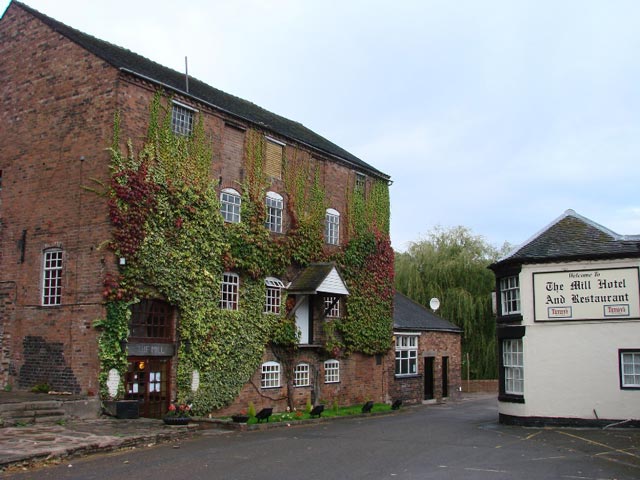Humble and homegrown heritage
Dating back to 1795 and the era of King Henry VIII, The Mill has over four hundred years of traditional corn milling history.
Constructed by Robert Bill and thus inscribed ‘R.B. erected in the year MDCCLXXXXV’ the once Priory Mill refined flour for monks at St. Michael’s Church. Believed to have had two water wheels, The Mill is fed by a leat entering the second floor of the building, by a bridge, and is sometimes affectionately referred to as ‘Two Mills under one roof.’
Harbouring a hunk of loaf
On 16 February 1836, Stoney Richard Smith, son of Richard Smith, was born in The Mill House opposite The Mill Restaurant. His brainchild was ‘Hovis Flour,’ an idea that conceived the extraction of the highly nutritious wheat germ from the wheat itself. A light cooking method ensured the preservation of nutrients before blending them with the flour again. This flour became known as ‘Smith’s Patent Germ Flour’* and the bread baked from it: ‘Smith’s Patent Germ Bread.’
The process was patented in October I887 and Smith teamed up with Macclesfield millers ‘S. Fitton & Sons Ltd.’ and joined the Board of Fittons.
‘Smith’s Patent Germ Flour’ was considered a cumbersome title, even by Victorian standards, and in 1890 a competition ran to find a more appropriate name. Mr Herbert Grime, an Oxford schoolmaster, won the competition and suggested ‘HOVIS’ as a contraction of the Latin couplet ‘Homonis Vis’ translated to mean ‘the strength of man.’ Until after the second war the ‘O’ in `Hovis’ was always depicted as an ‘o’ thereby indicating the original contraction.
The word ‘Hovis’ was registered as a Trademark in 1890 and in 1898, Fittons changed their name to ‘The Hovis Bread Flour Company.’ Unfortunately, Smith passed away shortly after in 1900 and can be found buried in Highgate Cemetery, North London, close to the grave of Karl Marx.
In 1918, ‘Hovis Limited’ was launched as a public company and the Hovis Trademark is registered throughout.
Milestone millstones live on
Prior to 1890, water rotated an over-shot wheel of some 25ft. in diameter before a turbine that produced up to 30 kilowatts of electricity replaced the wheel. The main spur wheel, measuring 13 feet 3 inches across, survives, and pierced wooden struts indicate the existence of three pairs of millstones, one pair of which remain and can be found inside The Mill Restaurant. These pairs of stones would produce 18Olbs of fine dressed flour per hour while the top floor of the mill would house up to 100 tons of grain.
Resurrected from the dust, grime and decay, The Mill’s new lease of life today is to reanimate its special (and famous) history with its new guests.
Contact us today on 01785 818456 to arrange your trip to The Mill or send us a quick message.

WHY WE BEST
Creative Design
Quisque at justo sagittis, semper lacus a, iaculis tellus usce
Fashion Design
Quisque at justo sagittis, semper lacus a, iaculis tellus usce
Web Development
Quisque at justo sagittis, semper lacus a, iaculis tellus usce
OUR PARTNERS


